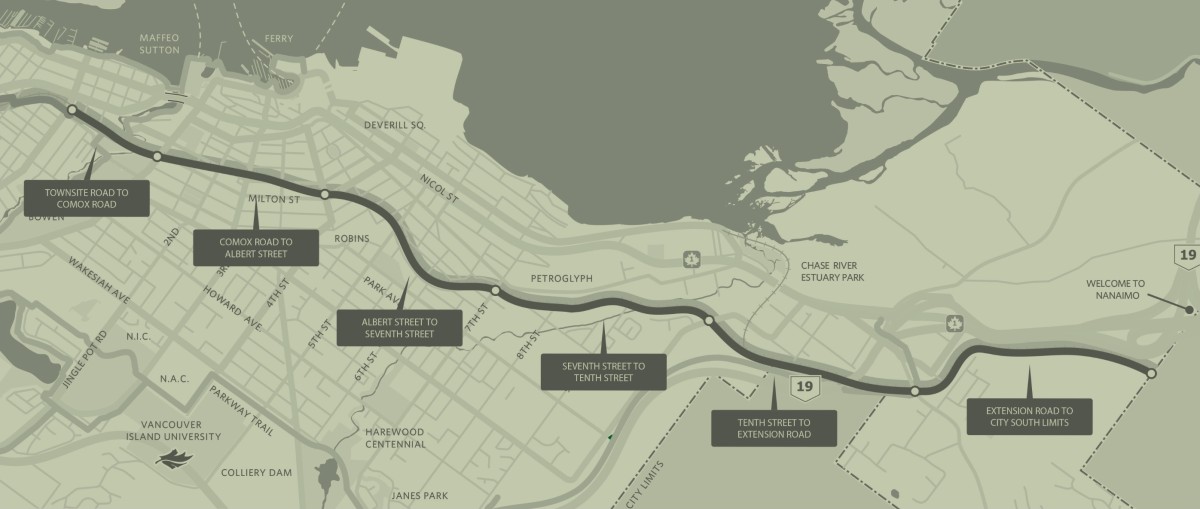accessible community


The Nanaimo Region Rail Trail (NRRT) is a partnership of community groups working together to advance the E&N Rail trail. The current members of the Partnership include the Downtown Business Improvement Association (DNBIA), Tourism Nanaimo, Regional District of Nanaimo, the City of Nanaimo, Greater Nanaimo Cycling Coalition (GNCC), and the Island Corridor Foundation (ICF). We are also in discussions with other groups interested in joining the partnership.
The interim executive team leading the Partnership consists of Andre Sullivan as Chair (DNBIA), David Grey as Vice Chair (GNCC), Tim Mawdsley as Treasurer, Tamera Rogers handling events, Kimberly Krieger managing communications, and Elizabeth Williams as Secretary (City of Nanaimo). For further inquiries, please contact the volunteers at info@nanaimoregionrailtrail.ca.




Over the past few quarters representatives have been meeting to discuss an expanded trail network. It was decided that:
The Partnership’s role includes:
In fall 2013, we began working with the Island Corridor Foundation, which has established an in-trust account. This account releases funds when plans are in place to build a specific section of the trail. Donations can be designated for particular sections or contributed to the top priority section determined by the partnership.



The Island Corridor Foundation (ICF) is a non-profit society established in 2003. It is a partnership between First Nations and local Governments that owns the rail corridor connecting Victoria, Comox, and Port Alberni. The ICF’s Board consists of 12 Directors, including representatives from First Nations, Regional Districts, and two at-large members. Its purpose is to acquire, preserve, and develop the Island Corridor, which spans from Victoria to Courtenay and Nanaimo to Port Alberni.
The City of Nanaimo has completed about half of the proposed “Rail Trail,” covering approximately 8 km. It runs from North Nanaimo Town Center to Terminal Park Mall. Progress on the trail slowed due to budget constraints and the need for park trail upgrades. The Nanaimo train station rebuild included a new trail section between Franklin Street and Fitzwilliam Street. Engineering and costing have been done for most of the corridor, with detailed engineering underway in the Old City Quarter.
Fundraising efforts are ongoing, supported by donations from Tourism Nanaimo, the Downtown Business Improvement Association (DNBIA), and individual contributors. Array Studios is assisting with branding and website construction. Plans for 2014 include continued fundraising, local government support, and trail expansion.

A charitable tax receipt is provided for each donation made to the NRRT. Funds are held in trust by the Island Corridor Foundation for the construction of rail trail along the corridor. Donors can choose to earmark their donation towards a specific section of trail or can have their funds go towards to next section to be built as prioritized by the Partnership. If you are interested in donating monthly or giving a one-time donation click “Make a Donation”. Please contact us at info@nanaimoregionrailtrail.ca for other donation options.
We are always looking for people to help join the effort. Send an e-mail to info@nanaimoregionrailtrail.com and find out how to best join the team.
Building the Rail Trail will take the work of local businesses donating their products and services at discounted rates. We will require assistance for the following trades and services to help build the trail:
| • Engineering Partner • Precast Supplier • Surveying Partner • Clean Fill Supplier |
• Paving Partner • Signage Supplier • Aggregate Suppliers • Excavating Partner |
We are also looking for items that can be used for our fundraising campaign for auction items and raffle prizes. Below is a PDF of the Corporate Partners Package.
If your business is interested in donating your products or services please contact info@nanaimoregionrailtrail.ca.
You can contact us from any of the options below or you can submit a message through the form on the right.